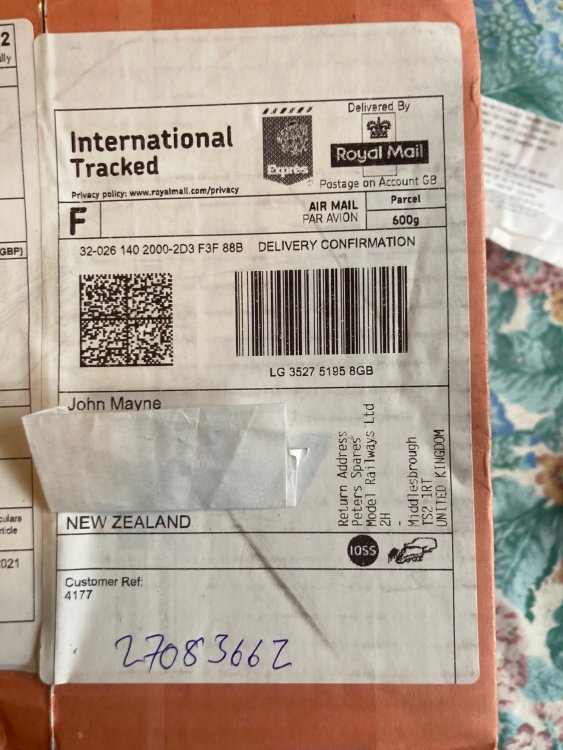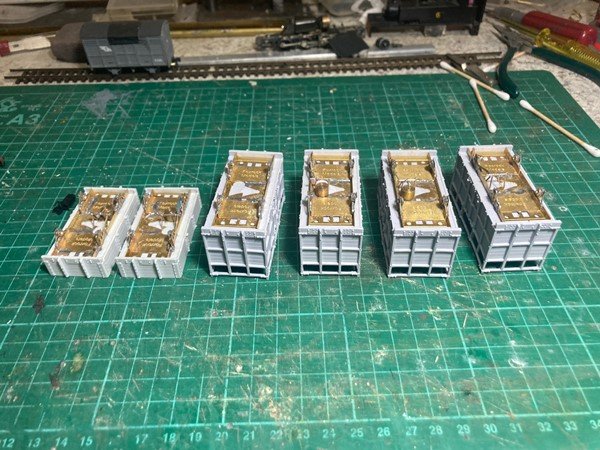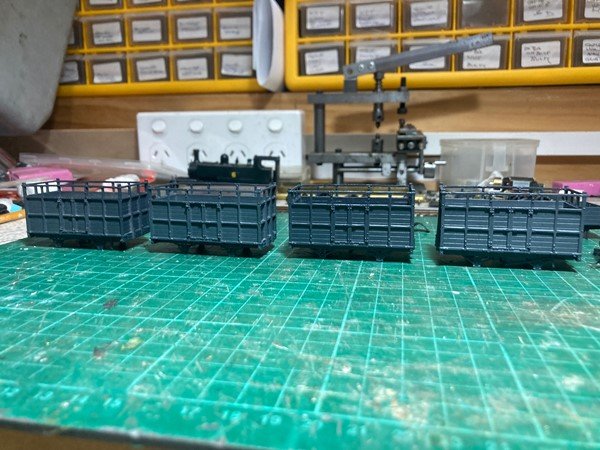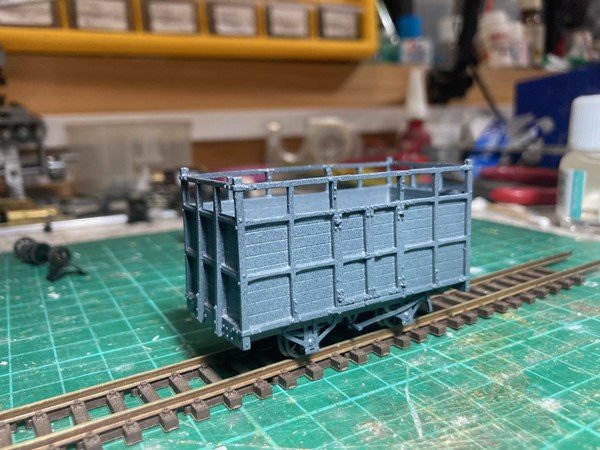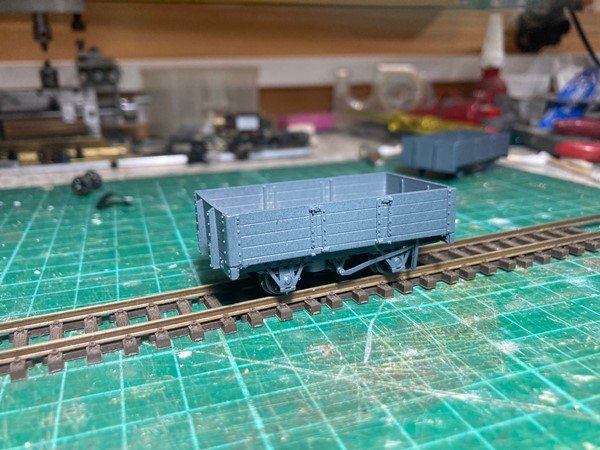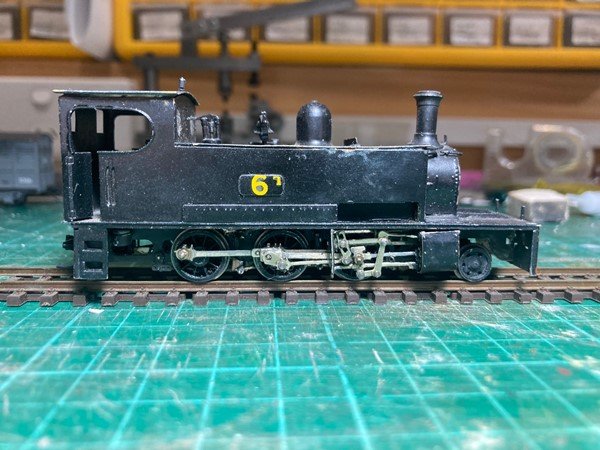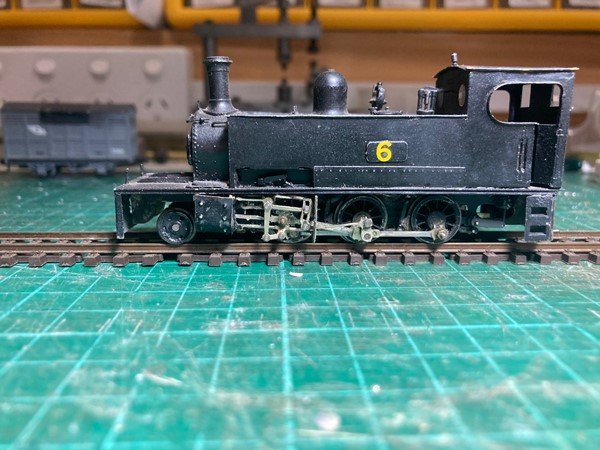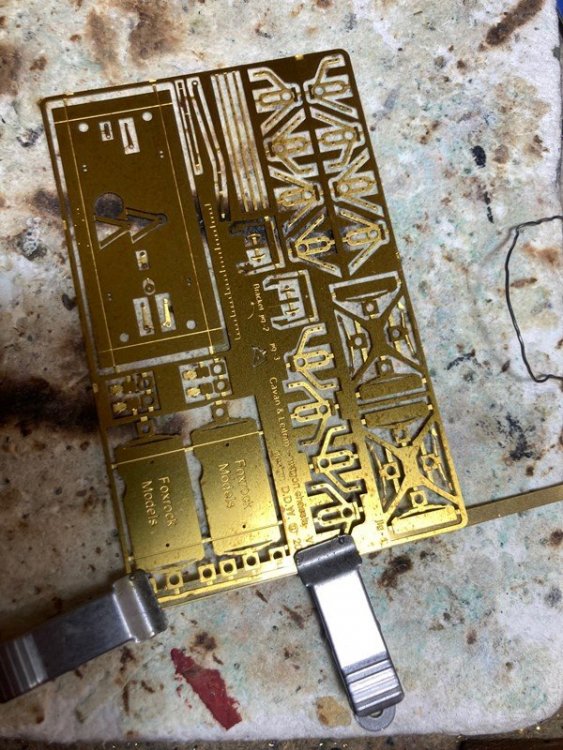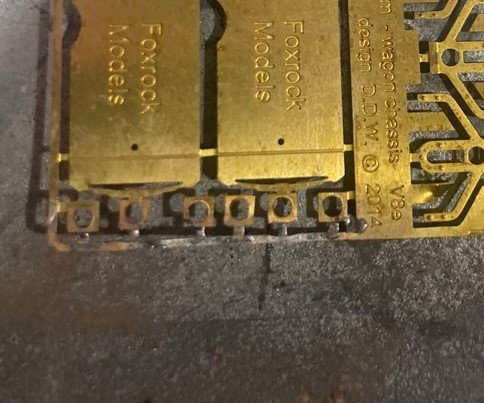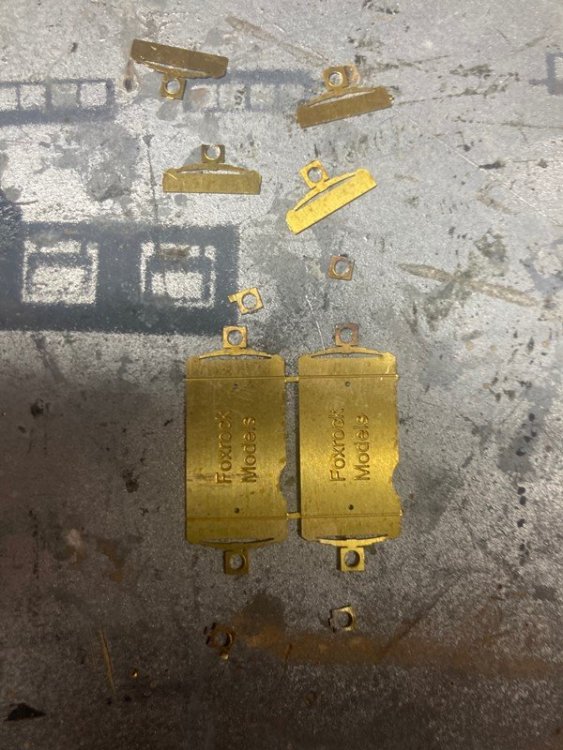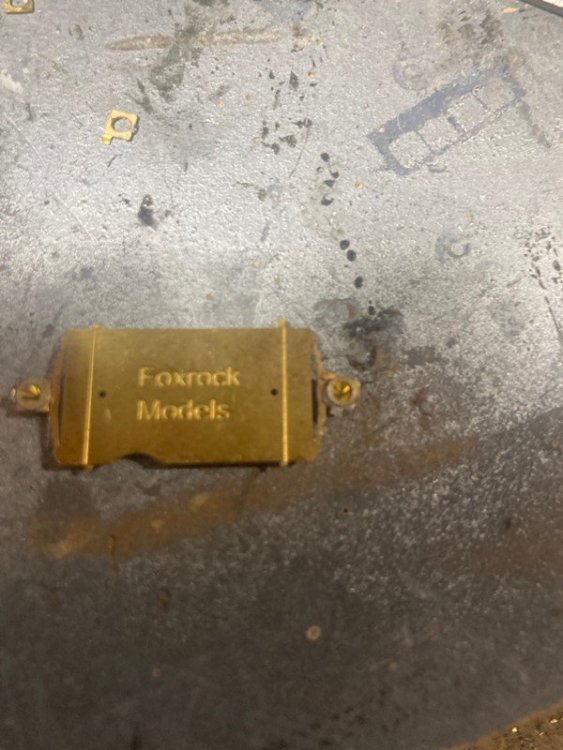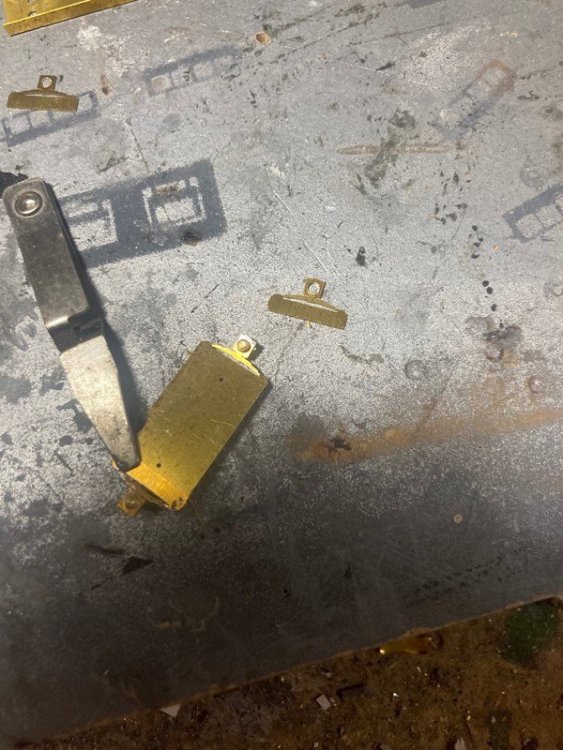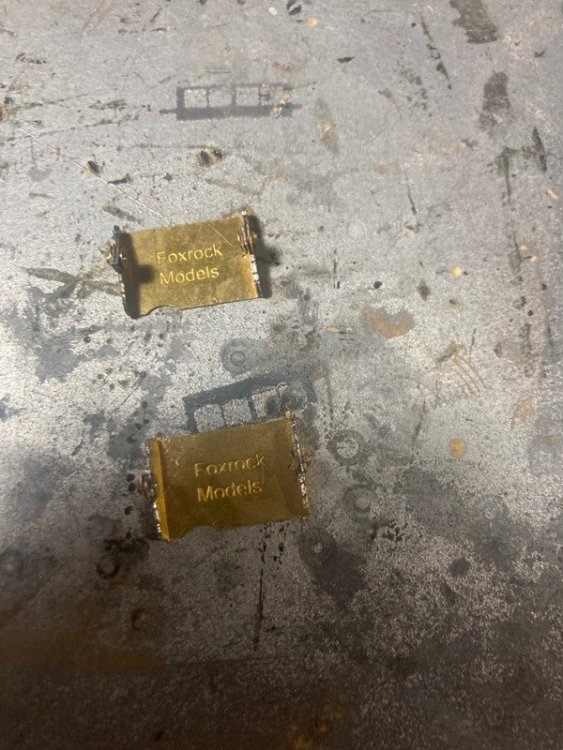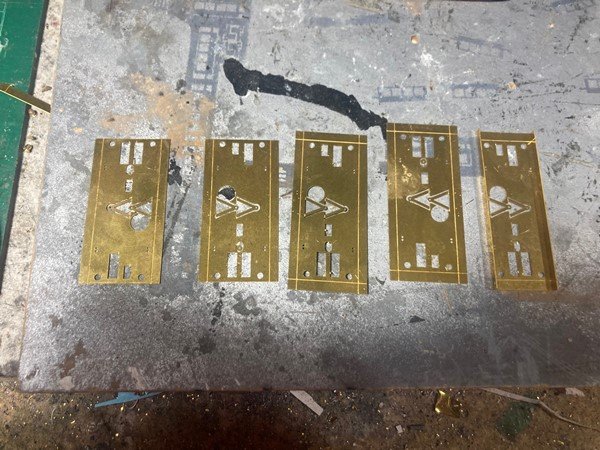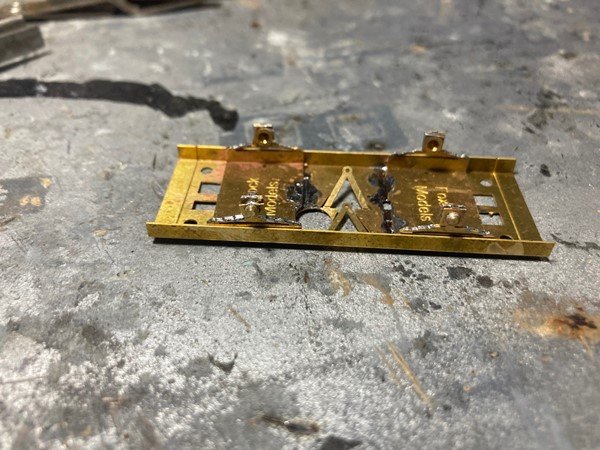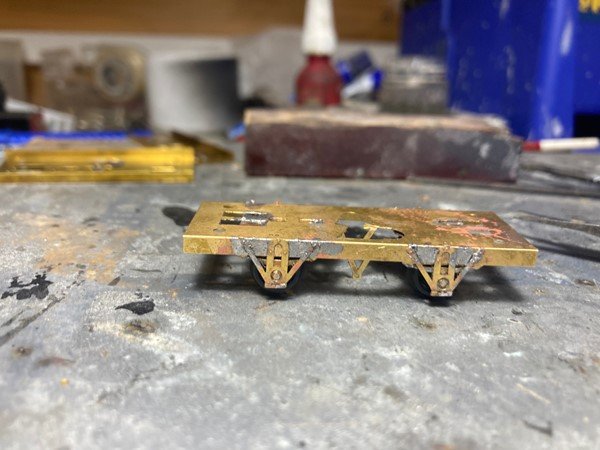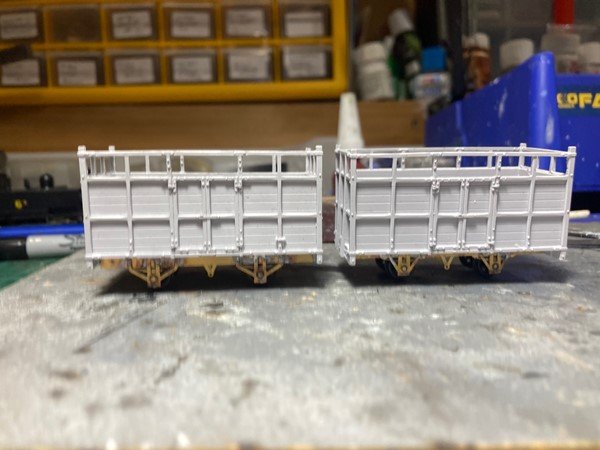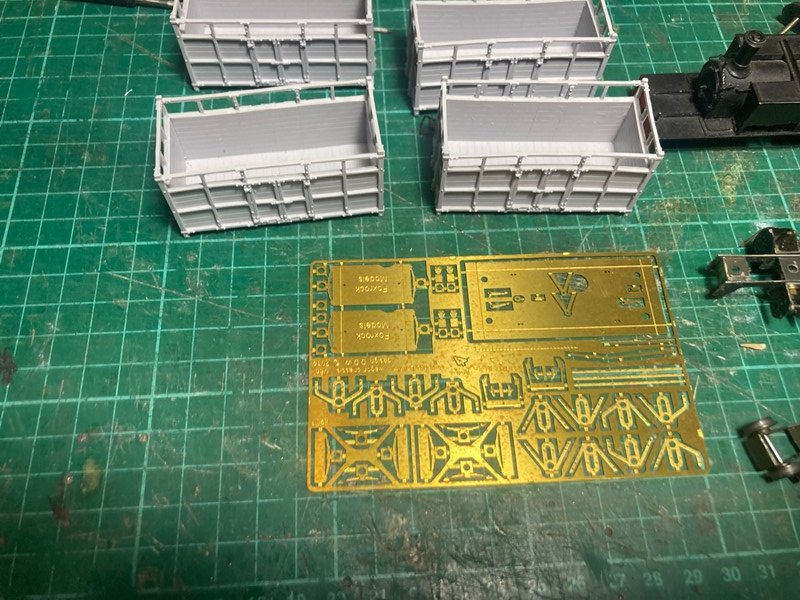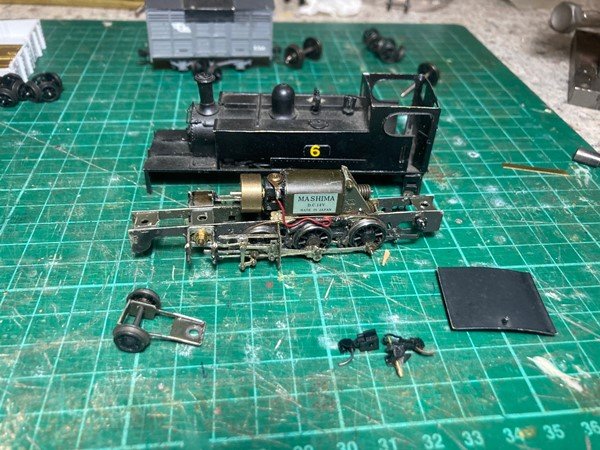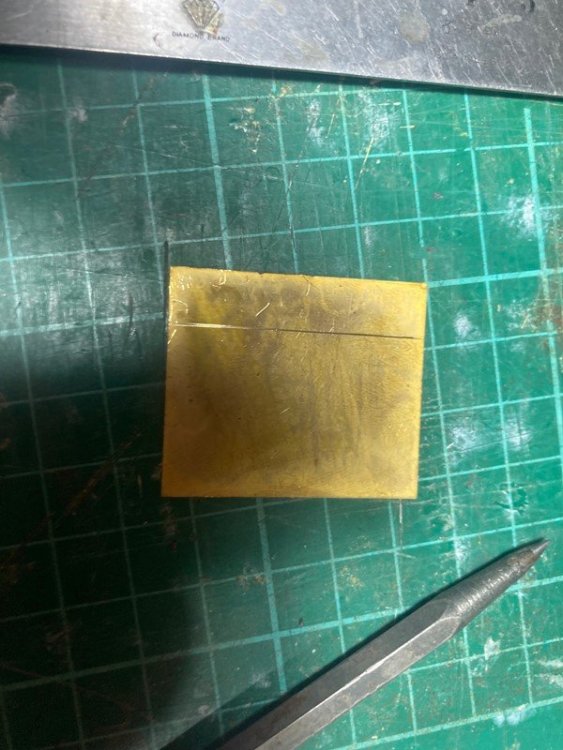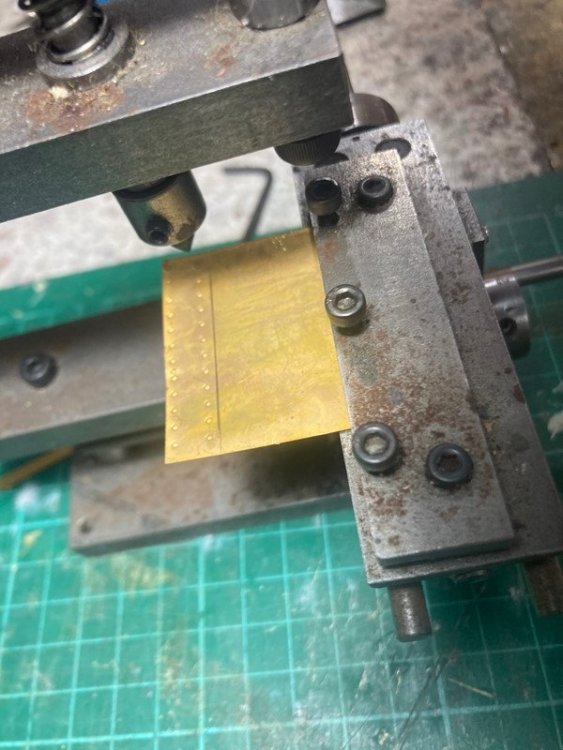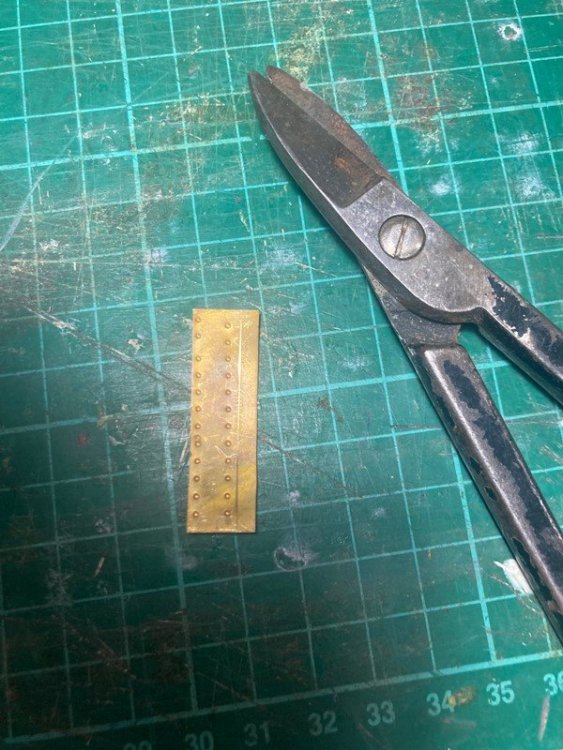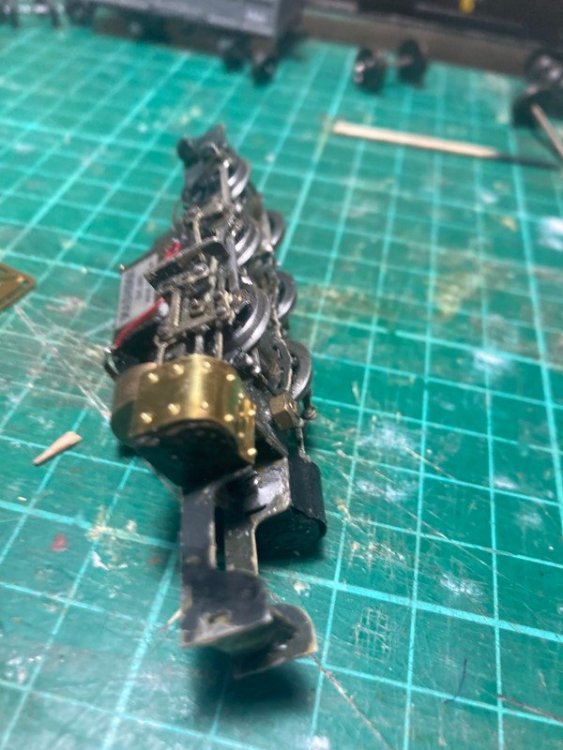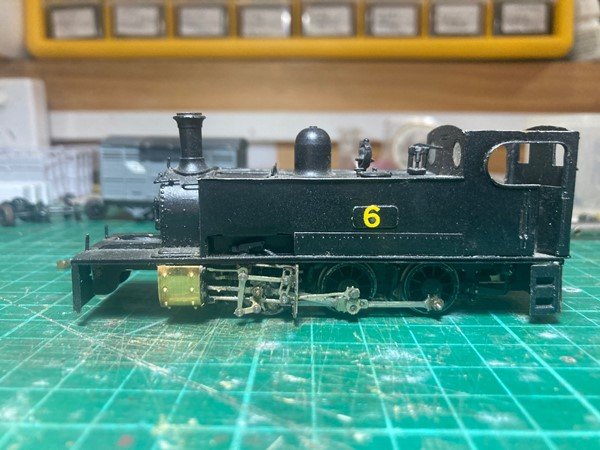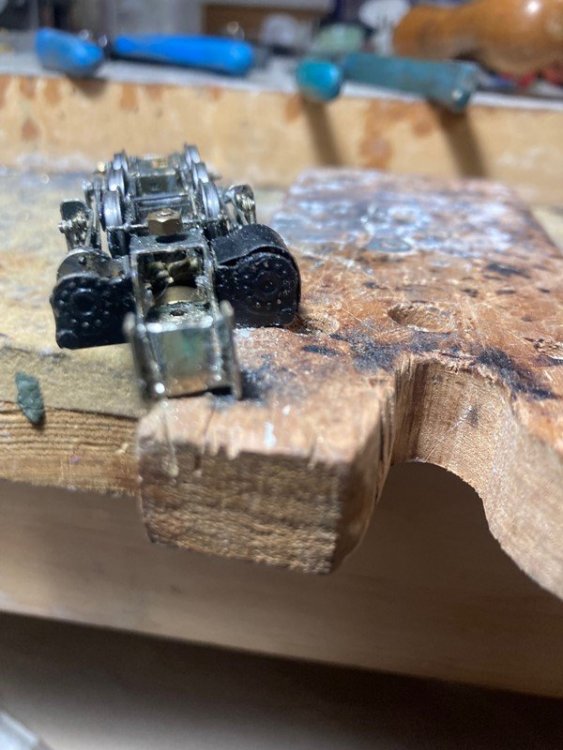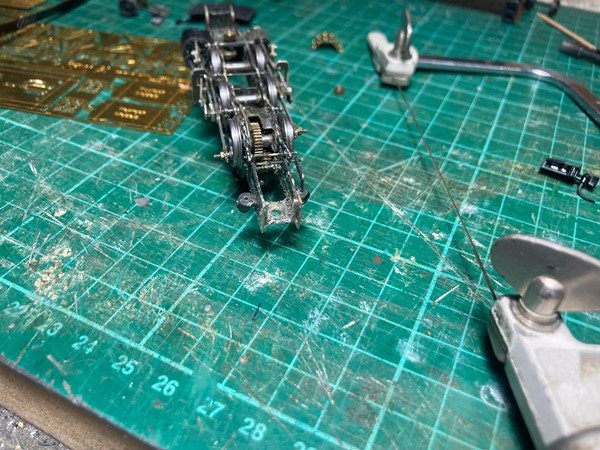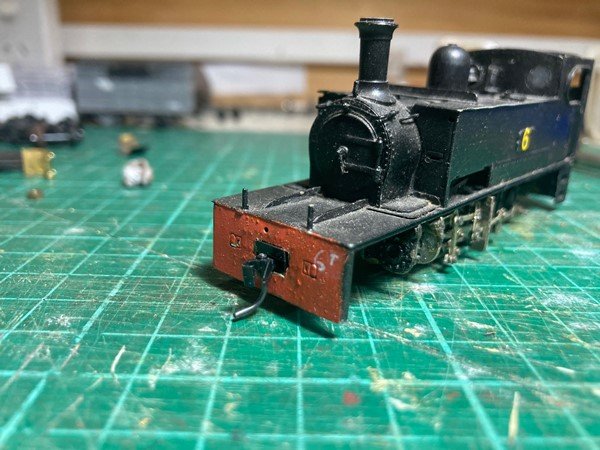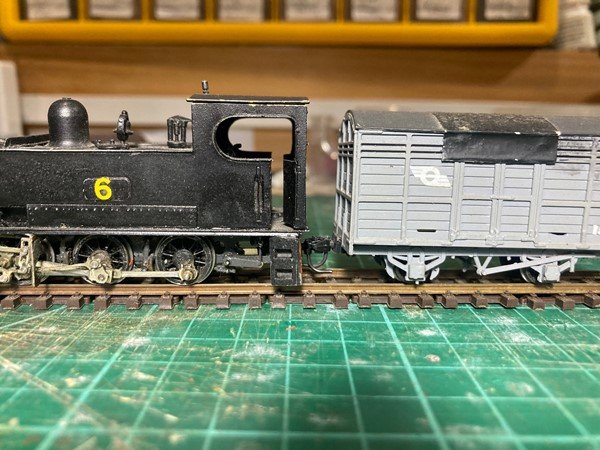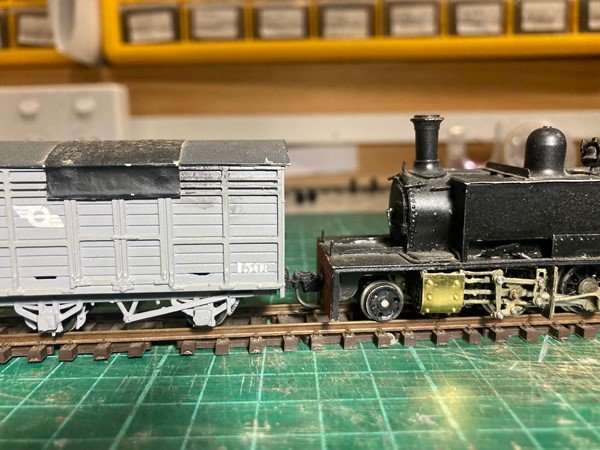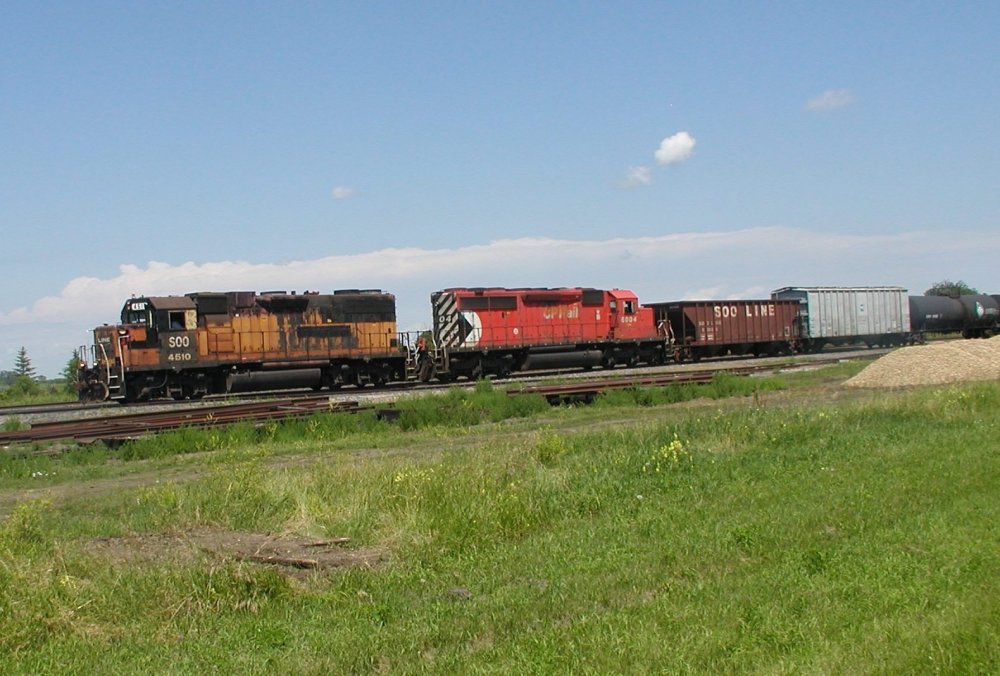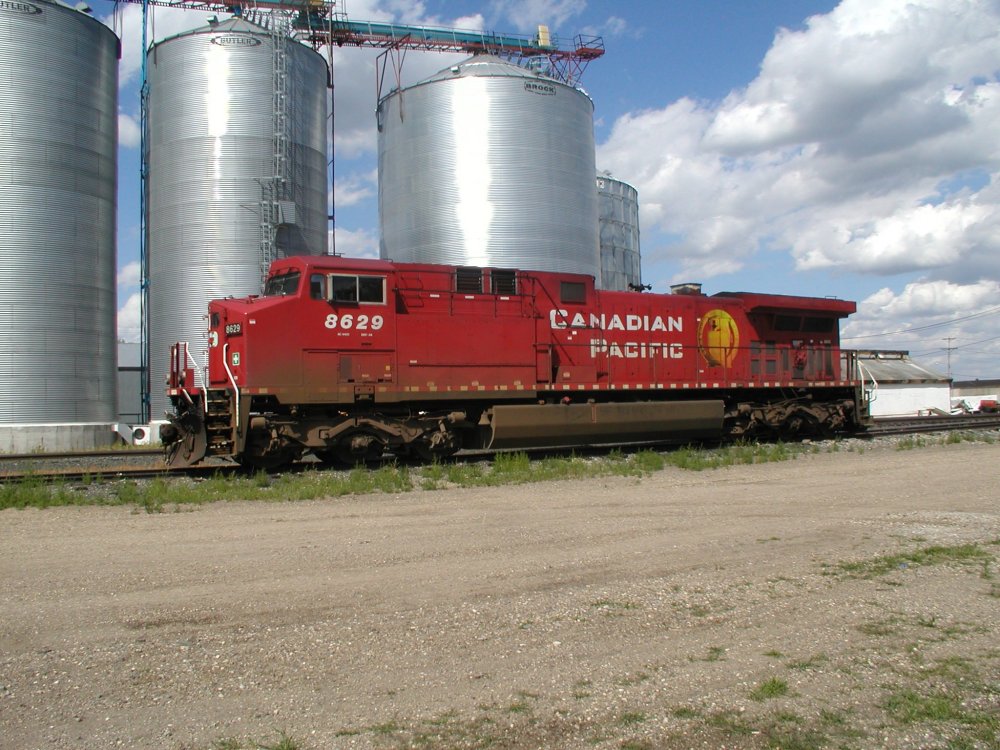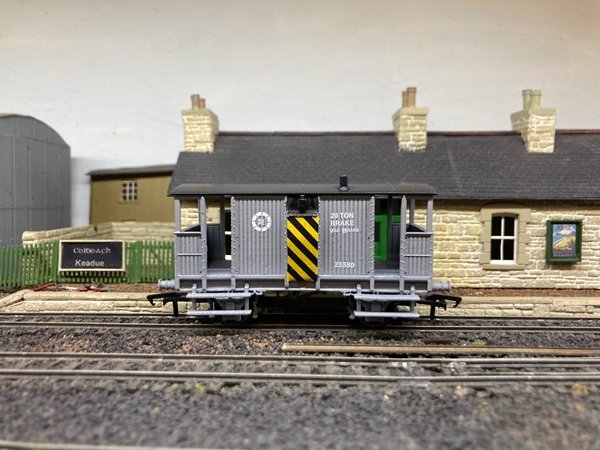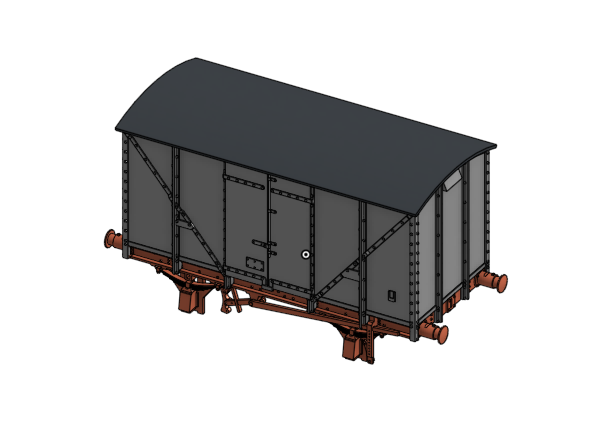-
Posts
4,879 -
Joined
-
Last visited
-
Days Won
119
Content Type
Profiles
Forums
Events
Gallery
Everything posted by Mayner
-
Funnily enough supplies have began to trickle through from the UK, a package arrived this afternoon with an IOSS logo on the declaration. All international parcels are now cleared using electronic customs declarations transmitted by the sending postal authority rather than a person reading the label on the box. It looks like the Royal Mail system is capable of transmitting IOSS data to EU postal authorities.
-
Little positive news to report this month as a result of a combination of Covid restriction here in New Zealand and continuing difficulty obtaining components and parts from suppliers in Europe and the Far East. RTR Wagons Brake Vans: I am currently focusing on completing current orders of 23580 Light Grey and 23544 Brown 20 T Goods Brake vans for potential delivery late 2021. We were unable to progress the models as planned following our August update as all our local suppliers were closed as a result of Covid restrictions. Other existing and planned wagon projects: We are currently unable to progress other existing and planned projects as our preferred 3D print suppliers and print bureau are closed as a result of on-going Covid restrictions in Auckland 52 Class Locomotive kits: The majority of kits have now been delivered to customers with some very positive feedback. CIE 4w Van kits: I am unable to provide an estimated dispatch date at this stage for these kits as I am currently awaiting components and parts to arrive from suppliers.
-
A multi purpose Railway Crane a complete reversal from IE recent practice of hiring mobile cranes for recovery and Hi-Rail excavators for p.w. work. https://www.kirow.de/typo3temp/cokcb2web/files/ee0d10fd6f03cc58b239cac7c8f13b38/MULTI_TASKER_EN.pdf
-
I fitted the brake levers and vacuum cylinders to the wagons but gave up on the brake hangers, shoes and linkages as they were a bit too fiddly for my eyesight and fingers to assemble. Chassis superglued to bodies, I even mislaid a couple of vac cylinders which might turn up some day. Cut of cattle wagons in grey etched primer. I first sprayed the wagons with an "Adhesion Promoter" (automotive wax and grease remover) before spraying with primer, this minimises the risk of paint flaking off both the brass and resin substrate. 3/4 view of cattle wagon, I still have to fit the axlebox covers! Standard small C&L open wagon, this wagon appears to be base on the original Metropolitan 40--5Ton wagons introduced for the opening of the line in 1887, the C&L appear to have added an additional 18 wagons---6T wagons before the large scale introduction of 'foreign' open wagons by the GSR & CIE to cater for the increasing coal traffic from the mid 1930s to the late 1950s. 6Ts re-assembly, cylinder covers replaced, coupler mounting plates fitted to the chassis fore and aft and chipped/damaged paintwork treated with Carrs Metal Surface Conditioner and Metal Black, the loco body needs to be washed to remove dirt and chemical residue. I am un-decided whether to simply touch up the chipped worn areas or try a light coat of my new weathered black mix which I use for wagon roofs. Colour photos indicate that 6T was painted black before she arrived on the C&L in the Spring 1957 and appears to have remained in reasonable condition while working in the railway.
-
My New Irish Lines article on assembling Worsley Works Laminates and Park Royal coaches is available on the Worsley Works Website http://www.worsleyworks.co.uk/NG/NG_NIL_Art1.htm The Irish broad gauge coach roofs is the tricky bit at the time I used Comet BR coach roofs cut down the middle filling the resulting gap with isopon and a lot of filling and sanding. Popeyes plasticard or ECMs formed brass roofs are much much neater solutions another alternative is to carve the roof from balsa with doped aircraft tissue roof surface which I used on a pair of Worsley Works AEC railcars
-
I think the chance of a postal worker looking for an individual parcel and reading the label in a modern mail center is pretty slim, the An Post parcel scanning and customs clearance system appears to be automated with minimal human intervention. Its possible the Universal Translator may not have been working when NZ Post transmitted the electronic custom declarations for the shipment to An Post at least a week before the shipment arrived in Ireland Most of the Irish shipment of loco kits disappeared into the An Post system for 4 weeks before re-emerging in another mail center marked unable to deliver return to sender. Follow up with NZ Post found that An Post got an error message when they attempted to input the electronic customs declarations transmitted by NZ Post. Fortunately most of the kits were delivered to our Irish customers late last week but one remains in limbo in the An Post system. I don't know whether the kits were delivered as a result of pressure from NZ Post or someone in An Post simply read the labels and put the parcels out for delivery rather than into a shipment to Dublin Airport. I suspect the last parcel will remain in the system until they enough "returns" to make up a truck load to the Airport We are getting lots of (written) assurances from NZ Post that this won't happen again, but we have alternative shipper if the problem re-occurs.
-
An Post customs declaration and clearance process appears to be at least partially automated, An Post are responsible for customs clearance and collecting vat Customs only become involved when its deemed necessary to open a parcel to examine its contents. The system is likely to be set up to collect vat on a % of parcels rather than all parcels going through the system otherwise the whole system would grind to a standstill if An Post attempted to collect vat on every parcel. I am having an interesting time at the moment trying to clear a shipment of kits through the An Post system. Apparently An Post were unable to read electronic customs declarations transmitted by NZ Post and are either unable or unwilling to attempt to enter the data manually by reading the customs declaration on the labels.
-
So to the wagon chassis assembly: The chassis kit is designed to capture detail variation that existed between individual C&L wagons and wagon types during the railways history, including variations in wheelbase and ironwork. The first job was to solder a reinforcing strip along one edge of the fret, as recommended in the instructions. The strip minimise distortion while opening out bearing holes & packing pieces(with a tapered to broach) to clear top hat axle bushes. I used a strip of scrap brass, soldering clamps are by Micro Mark. I use phosphoric acid flux (Ranex Rustbuster diluted with distilled water https://www.bondall.com/ranex-rustbuster/ not sure if anything similar is available in Ireland or UK) with DCC Concepts 145° solder. The solder basically runs into the joint by capillary action avoiding blobs of excess solder. Bearing holes opened out and reinforcing strip removed The next stage of the assembly involves assembling a number of small parts. The square washers are packing pieces which fit on the inside of the (not quite) W iron assembly, the packers with spring attached fit on the outside of the W iron assembly I found the simplest way to assemble the units was to solder the bearings and packing pieces to the W irons before folding the units into a U shape. This was easy to do with the fold lines facing down and the bearings facing up, a hot iron flux and minimum solder on the tip of the iron. I then soldered the 2nd layer of the spring/w iron in place. Folded W irons waiting to be soldered to the chassis The chassis is designed for the longer cattle wagons and short opens. Shortened by breaking off at the half etched lines and the solebars by folding. The "W irons" fit between the solebars, the holes in the w irons align with holes in the chassis and can be set up for a 7' or 7'6" wheelbase. I omitted an additional spring axlebox layer which fits below the solebar. The main reason for the complexity. On the Cavan & Leitrim and the majority of Ulster's railways (broad and narrow) wagon the Axleguards were bolted to the outside of the solebars with axleboxes and springs on the inside unlike the "Southern" Companies and the GNR The kit includes 3 alternate sets of cosmetic axleguards to cover the more common variations between C&L Wagons Cosmetic axleguards soldered in place. I will remove excess solder with a fibreglass brush before painting, in this case solder acts mainly as a key for paint. The kit includes axlebox covers and brake gear, but that's another days work! One that I assembled earlier for comparison, I did not realise I used different axleguards on the wagon on the left. The standard of detail, pattern making and casting of the wagon bodies are exceptional for a resin cast model. The resin is quite flexible and delicate parts unlikely to break off during normal handling and use. The C&L had a small fleet of cattle wagons 81-100 that could carry 10 2 year old cattle one more than most contemporary Broad Gauge wagons (13'6"-14') because of their greater length. Wheels are from my surplus stock and may require replacement its difficult to maintain a consistent back to back gauge as they tend to slip on their axles (even with Locktite) I will probably use these wagons for Fair Specials as there is a photo of a train of these wagons is CIE days, 4 and a van is a bit short, 5 and a van just about fits in the fiddle yard.
-

Avonlea Sun Loco service facility. CP Rail
Mayner replied to NIRCLASS80's topic in US / Canadian Railway Modelling
The 'big sky" backdrop, neat ballasting and and switch stand really sets the scene as a Class 1 Railroad in the grain belt. Is the layout set North or South or the 49th Parallel? -
Its a long time since I did any personal modelling, I recently started working on my Irish narrow gauge stock a useful distraction when New Zealand recently went into lockdown. I decided to focus on my narrow gauge stock as most of the locos are due for repairs as they are getting long in the tooth and I have some unbuilt wagon kits. I started with my T&D locos as they do most of the work on the layout. 6T lost one of her cylinder wrappers and the couplers require replacement. Model parts tend to disappear when the fall on the floor so far the chimney from Keadue Goods Shed, a section of wall, a coach roof and one of 6Ts cylinder wrappers have disappeared without a trace despite a thorough search of the floor and under the furniture, our neighbourhood's version of the Bermuda Triangle. A couple of years ago I acquired 4 Foxrock Models C&L Cattle Wagons and 2 C&L Open wagon kits to form a Cattle Special and strengthen on of the Arigna coal trains. The bodies are high quality resin castings with a fairly complex etched brass chassis, the Backwoods wagon chassis although very good are relatively un-detailed by comparison. First job was to dismantle 6T to her main sub assemblies (but not dismantle the chassis!), so I can fabricate a new cylinder wrapper and modify the chassis to fit the new couplings. The new wrapper is formed for a piece of 0.20" brass (kit scrap), the scribed line is the wrapper width. I used a GW Models rivet tool to emboss the rivets, good practice if I ever get round to building a CVR Sharp Stewart 0-4-2T! The marks on the right are from the tools clamping bolts. I cut the wrapper to the correct width using a tin snips gradually cutting away strips parallel to the line the finishing with a fine file much easier than a piercing or razor saw. Cut waste material distorts while wrapper stays flat, one more cut to make before finishing with file. Wrapper dressed in place, I started at running board level dressed the wrapper round the cylinder ends then gradually trimming to the finished length. Starting to look like a loco again wrapped temporarily positioned with Blu-tac. The kit was designed with L shaped frame spacers fore and aft, which leaves insufficient room between buffer beam and spacer for a Kadee HOn3 draft gear box. I had originally fitted my T&D locos with Microtrains N Scale loco couplers which have a short draft gear box that just about fitted, but gave trouble in service. The first step was to partially remove the vertical section of the frame spacers, by first cutting notches with a piercing saw. Then snapping off the vertical section, the notch section cut leaves a narrow vertical section in place at both ends to avoid weakening the chassis. The kit was designed for scale chopper couplers and I had already formed a cut out in the buffer beams for the N Scale Kadees which were slightly widened for Hon3. 6T was overhauled and appears to have been painted black before sending to the C&L in 1957 and ran with a hand written 6T on the buffer not the traditional shaded transfer. Coupling problem seems to be solved, loco and wagons now have matching coupler heights and knuckles! The next challenge is fixing the coupling at the cab end. The chassis fixes to a captive 6BA bolt/stud under the cab floor, it looks like I may have to secure the coupling mount box with a 12BA bolt drilled and tapped into the body securing bolt!
- 392 replies
-
- 15
-

-

-
A remote control shunting loco recently fell into Harbour while shunting Picton freight yard. Picton is the South Island terminal of the train ferry that links New Zealands North and South Islands Rail system. The loco ran down the train ferry link span and fell into the harbour. The shunting locos use radio remote control that are controlled by a shunter (human) at the lineside.
-
I used a mixture of Peco Code 60 and Code 82 rail on a 21mm gauge layout I started about 10 years ago. I had the Code 60 in stock for a long term project, the Code 62 was salvaged from Atlas HO flexible track that was surplus after I sold my collection of O-16.5 American narrow gauge locos and stock. Resolution is not great. The loco and train are on a section of track laid with Code 60 rail to represent the lighter weight of rail often used in sidings and secondary running lines The trackwork on the left was laid in Code 82 rail to represent the heavier rail used on main running lines and sections of line carrying heavy traffic. I made the mistake of spacing the line on the left too close to the running line which lead to problems with coaches side swiping on curves, the double slip was a bit to ambitious for my tracklaying skills and I scrapped the layout. Looking the other way the difference in rail section between the track on the left and the other lines is more noticeable. The crossover is supposed to be part of the connection between a main running line and a small marshalling yard. Track was laid on foam rubber underlay copperclad sleepers, track was pre-fabricated on a bench, wire droppers fitted, painted with auto aerosol before laying in a bed of white glue on underlay, adjusting alignment and ballasting with Woodlands Scenics loose ballast before glue sets, vacuuming off surplus ballast. Some Irish companies principally DSER, GSWR, GNR, NCC and BCDR used chaired bullhead rail for main line trackage and running loops while using lighter flatbottom rail in sidings, branchlines and secondary main lines. Bull head track was retained on some lines until replaced with flatbottom CWR on concrete sleepers from the 1970s onwards, to confuse things slightly CIE, UTA and GNR used concrete sleepers with bullhead track from the 1950s onwards, concrete sleepered bull head track recovered from NIR is used on the Downpatrick Steam Railway. C&L finescale supply 4mm bullhead track components in including rail, chairs, sleepers. Flatbottom is more variable Peco Code 70 or Code 75 are probably the best options for general use possibly reserving Code 60 for sidings or narrow gauge. CIE tended to use a mixture of 84, 90 and 95lb yard flatbottom rail, 84lb rail installed during the 1920s was in use on the Mullingar-Sligo line until relaid with CWR track with a metric rail section about 20 years ago, the Mayo and Athlone Galway sections mainly 90lb. There is little visual difference between 84 & 90 lb FB rail just a slightly heavier section. 95lb FB has a wider foot 5 ½" which seems to correspond with Broithe's section possibly installed when 95lb FB. Possibly Code 70 for 84-90lb rails and Code 75 for 95lb rails Peco Code 60 for narrow gauge or lighter rail sections for little used sidings.
-
Something like a Parry People mover or contemporary or Hybrid version of the Drumm Battery Train with similar styling to the Dublin & Blessington Drewry railcar would provide a level of self sufficiency in terms of rolling stock, simple to maintain and operate, good for the eco credentials and attractive to families with young children who want a short train ride the railways bread and butter traffic. They might be able to obtain funding through some form of Gaeltacht Business Grant for a Parry People Mover or a new railcar, the primary purpose of the railway is to provide employment and promote tourism in the Gaeltacht and a railcar would support both objectives.
-
From 1st July all international parcels are required to have "an electronic customs declaration" which is generated in the Post Office or generated on a postal service on-line platform (retailers, traders and manufacturers. The declaration includes TIAC code value and other information. When a non-EU business like Hattons, Rails posts an order to Ireland details of the shipment and customs declaration are automatically transmitted by the Royal Mail to An Post before the package even leaves the UK. IOSS appears to be an intermediary or middle man to allow non-EU businesses pay vat on EU sales without having to register in every state.
-
I love it! Living abroad I miss the distinctive regional accents found in Ireland and the UK. Perhaps a case for phonetic script or even subtitles in the Larne and Dugort Harbour threads. I thought I understood most Irish accents until I met a couple of IE inspectors (possibly from Drogheda or Co Louth) while working near the line near Gormanstown and I could not understand a word they were saying!
-
Like the Chinese Engineers visiting a world-renowned factory (in Staffordshire) I got to see behind the scenes in all sorts of interesting places and to meet equally interesting people while working as a health and safety inspector in both Ireland and New Zealand. One of the more interesting was a heavy engineering works and former Locomotive builder continues to operate from its original 1868 premises complete with timber framed Foundry & Machine Shop. https://agprice.co.nz/our-company/ The business was originally established to produce mining machinery during a Gold Rush rush later became a major locomotive builder and continues to support the rail industry.
-
Certainly captures the spirit of the place with the sharp curve and overgrown siding I had planned to include Kiltubrid on the tramway section of the narrow gauge layout, I managed the sharp curve and bridge but the baseboard was too narrow to fit in the road, railway and Halt Keepers house. perhaps some day I will get round to building a new scenic section or mini layout incorporating Kiltubrid and Drumcong Post Office the two signature scenes on the Tramway. Currently I am thinking of a small OO9 layout to replace my N gauge American end-to end layout that has not progressed during the past year or two. I am thinking on a continuous run layout with a Welsh Narrow Gauge theme an excuse to buy a Bachmann WHR Baldwin 590 and Peco slate wagons and dispose of more of my American N gauge stock and locos.
-
The majority of Shapeways models are available in "Versatile Plastic" using FDM technology most likely because of cost. There tends to be a trade off between surface finish, strength and resilience with 3D printing technologies and materials. Versatile Plastic has the advantage of low cost strength and resilience with the disadvantage of a coarse surface texture and difficulty sanding. Fine Detail Plastic has the advantage of capturing fine detail against higher cost, visible layering and brittleness. Resin Printing is good at capturing fine detail with minimal layering against high cost (labour and material) and brittleness, requiring a high level of care in choice of resins for railway models. Shapeways have a SLA printing option (SLA Plastic) at 3-4 times the cost of versatile plastic. It might be worth contacting the designer for a quote for an SLA print of a simple coach or a wagon. I tend to agree with Andy that scratchbuilding or an etched kit would be a better option for a loco or coach than a Shapeways Versatile Plastic print.
-
CIE stopped using MK2D stock on the Enterprise after the train was de-railed as a result of an attack on the line near Lisburn in the mid 1970s. There is a photo of the de-railed train in an IRRS Journal from the period, coaches remained coupled and upright, I don't know if the de-railment was as a result of a hi-jacking or a bomb being detonated under the train. Conventional stock was also more operationally convenient for CIE as there seems to be enough Craven, Park Royals and Laminates to strengthen trains to meet seasonal demand while availability of MK2d stock was tight, the 1970s MK2D Enterprise seems to have typically loaded to 5-6 coaches including van. I prefer the original Maroon & Blue scheme since I first saw the train in Connolly station in 70/71 and later used to listen to and watch the evening North bound Enterprise climbing towards Killester from Collins Ave while waiting on the bus home from work for most of 78-79.
-

Avonlea Sun Loco service facility. CP Rail
Mayner replied to NIRCLASS80's topic in US / Canadian Railway Modelling
Interesting to see models of SOO ex-Milwaukee Road Bandits I came across an ex Milwaukee "Bandit" GP38-2 but did not realise what it was while visiting relative in North Dakota in 2004. While most of the through trains were hauled by relatively new GE power in the CP Beaver scheme, way freights were worked by locos in CP Pacman & SOO line branding. -
While Irish Rail were a lot more pro-active than CIE in terms of pursuing both passenger and freight traffic, the rail system became increasingly un-reliable and close to a state of collapse (breakdowns, derailments, extended journey times) as a result of the run down nature of the infrastructure during the 1990s. 1900-1914 is probably the closest to a "Golden Era" in terms of Irish Railways both in terms of sheer variety, standard of service and standard of maintenance of equipment and infrastructure. IE in the 90s and early 2000s is an ideal period for modelling a run down railway with weathered locos and stock and poorly maintained track, signalling and infrastructure The "Big Companies" (GSWR, GNR, BNCR (NCC) and MGWR) were prosperous even by UK standards, all introduced large modern locomotives and bogie stock with dining car service for main line services (all in distinctive liveries) during the early 1900s. IE was still attempting to run main line service on track laid by the GSWR,GNR & Midland 70-90 years later!
-

Arup to undertake all-Ireland rail review
Mayner replied to spudfan's topic in What's happening on the network?
It looks like a logical follow on from the "Irish Strategic Rail Review'' Booz Hamilton 2001 which marked a major change in Irish Government thinking which had previously focused on the losses made by CIE/IE rail services with no long term planning to retain and develop the existing rail network let alone develop new services. The future of rail in Ireland was in doubt during the 1990s with both the IE & NIR systems approaching the point of collapse, there was little Irish Government commitment to maintaining or developing rail services, overdue track renewals and improvements such as the Arrow & revived Enterprise were largely dependent on EU funding. The Irish Government had implemented a policy on no major investment in rail (with the exception of completing the Cork Line CTC and MK3 Intercity Coach projects) under the Building on Reality" programme of the 1980s, this policy was not finally reversed until the Government implemented some of the recommendations of the review which lead to the loosening of the purse strings and a shift to a Commuter and Intercity passenger railway with major investment in new rolling stock, infrastructure renewals which lead to more frequent train services. -
There are/were two Clonmacnoise & West Offaly "trains" coaches. The Blackwater Operation catered mainly for Coach Tours and added a second train (Coach) after several years successful operation. The project and Blackwater Museum was set up on the initiative of redundant BNM staff in the late 80s and seems to have been financially successful. the Tourist Train Operation was shut down after the new Shannon Bridge Power Station came on line and BNM fuel peat rail operations became extremely busy. I visited Blackwater in the early 90s both Tourist and Fuel Peat operations were busy with Milled Peat Trains queuing behind the 'passenger" line of sight operation. Interestingly Blackwater staff were proud of their operation and had visited several of the Welsh Narrow Gauge Lines while planning the West Offaly operation. By contrast I was the only passenger when I visited the Bellacorick railway and staff not exactly enthusiastic. The rolling stock at Bellacorick was more interesting from an enthusiasts perspective, the passenger portion of an ex-West Clare diesel railcar and a unique BNM rebuild of a RH diesel, but less attractive to the casual visitor or Coach Tour participant.
-
Definitely fits in the "Now for Something Completely Different" modelling category. The Lartigue loco looks really well in lined blue.
-
RTR wagons. We completed the decorated sample of 23544 & 23580 20T Brake Vans with post 1963 wheel logo for delivery Sep-Oct 2021. We are using waterslide (Railtec) transfers for these vans rather than pad printing used for our "Flying Snail' vans due to the relatively low numbers involved and challenges in forming the wasp stripes using pad printing. We are currently examining the option of dry print transfers as an alternative to waterslide for the Bulk Grain Wagon and other future models. Future models: Our designer is currently working on the original GSWR/GSR (planked)and early CIE (metal sheeted) versions of the standard covered H wagon. Loco and Coach Kits. The 52 Class Locomotive kits are sold out and have been shipped to customers. The parts are in stock and we expect to ship the Heating and Luggage, Luggage Van and Post Office/Tool Van kits to customers during September and October 2021. While the majority of these kits are pre-sold a number of these kits will be available for sale on the website.https://jmdesignmodelrailways.com/
.png.c363cdf5c3fb7955cd92a55eb6dbbae0.png)

